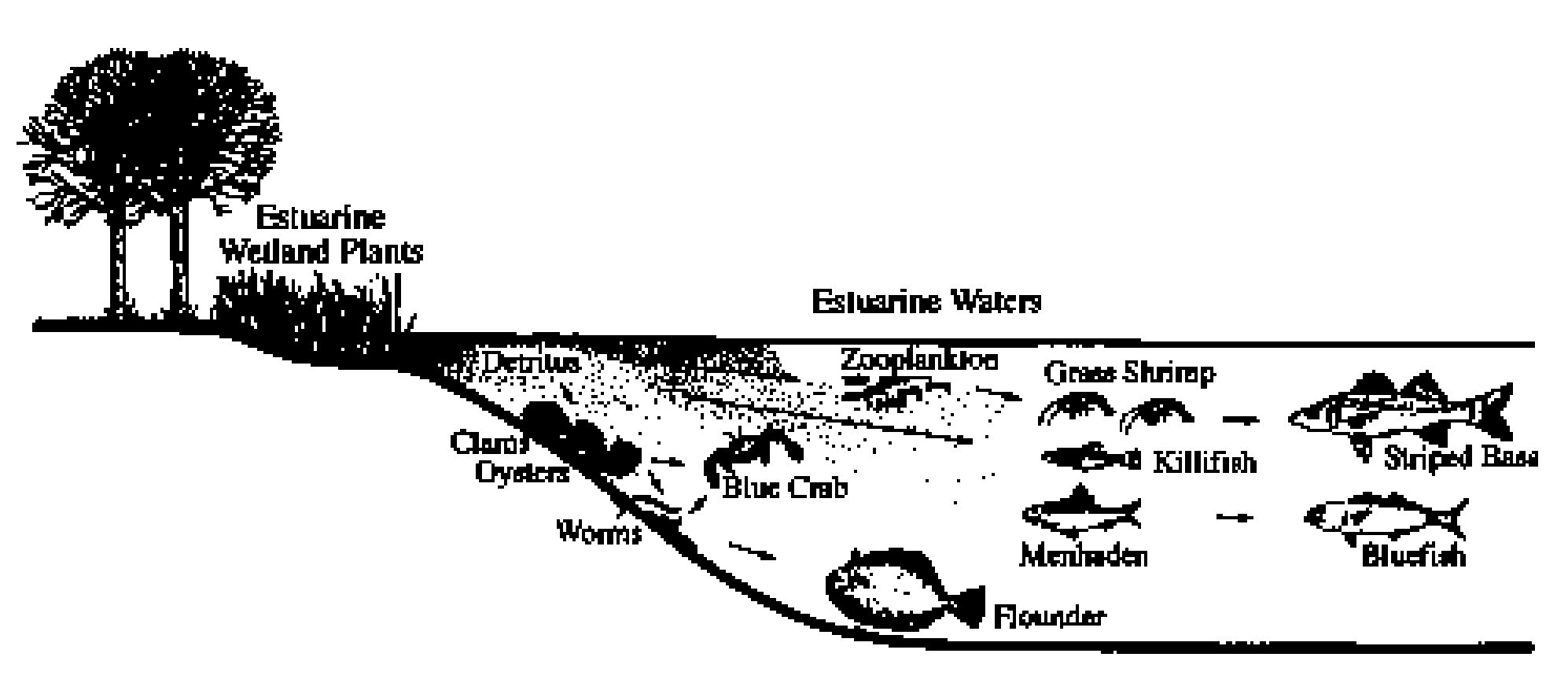Aquatic Diversity
Wetlands are among the most diverse and productive ecosystems in the world, and certainly in Maryland. Wetland plants efficiently convert solar energy, through photosynthesis, into plant material or biomass and produce oxygen as a by-product.
Submerged aquatic vegetation (SAV) is an important contributor to the aquatic productivity of wetland ecosystems. Submerged aquatic vegetation is a diverse assembly of rooted macrophytes found in shoal areas of Chesapeake Bay, from its mouth to the headwaters of its tributaries. Visit the Virginia Institute of Marine Sciences website for more information about SAV in Chesapeake Bay.

Wetland plants, such as those found in fresh water and saltwater marshes, serve as food for a variety of aquatic and terrestrial animals. The process of plant decomposition provides a major food source for many aquatic organisms. This material, called detritus, forms the base of an aquatic food web that supports a diverse community of wetland organisms, especially in coastal and tidal wetland environments. Zooplankton, shrimp, clams, worms and smaller fish eat detritus and the microscopic animals, such as bacteria, fungi, diatoms and protozoa, that grow on detrital surfaces. In turn, these smaller consumers of the food web support a wide variety of fish, birds and mammals species.
Maryland's wetlands are regarded as the farmlands of the aquatic environment, providing significant food sources and other natural resources each year. A variety of natural products are produced by wetlands including timber, fish, shellfish, wildlife, peat moss, cranberries, blueberries, wild rice and livestock hay. (from Tiner and Burke, 1995)
Sources:
A Method for the Assessment of Wetland Function, Fugro East, Inc., 1995, for Department of Natural Resources
Wetlands of Maryland, Tiner and Burke, 1995, for U.S. Fish & Wildlife Service and
Maryland Department of the Environment
A Comprehensive Nontidal Wetland Watershed Management Plan: A Guide for Local
Governments, Clearwater et al., 1998, for Maryland Department of the Environment